There are times when you want to get close to nature with your RV or you simply want to boondoggle away from the amenities of an RV park. Not only does this mean bringing everything you need with you, but you also need to keep things like food fresh and water cool.
To answer moments like this, many RV manufacturers offer built-in refrigerator units, which are designed to run off of electricity as well as propane.
This might leave you wondering just how much propane does an RV refrigerator use?
How much propane your RV refrigerator use can vary depending on the size, and age of your RV’s refrigerator. In general, a newer RV refrigerator with around 10 to 12 cubic feet of internal volume will consume around 1.5 pounds of propane per day. This translates into roughly 1,400 BTUs per hour. However, there are some other factors that could impact your RV refrigerator’s performance.
In this article, we’ll take a closer look at how an RV refrigerator uses, as well as the various ways you can maximize its efficiency.
This also includes tips for properly maintaining your RV fridge as well as ways to help augment your cold storage options with things like thoughtful cooler management.
How Does An RV Refrigerator Work?
Before you can properly maximize its efficiency, you need to first understand how an RV refrigerator works. There are a few distinct differences from the refrigerator you have in your home’s kitchen.
RV refrigerators are called “Absorption Refrigerator.” While the refrigerator in your home uses compressed freon to cool the interior, an RV refrigerator using a blend of hydrogen, ammonia, and water, to produce a powerful evaporation effect.
When this fluid solution is heated by an electric element or a propane flame,it moves through a percolator pump which leads to the release of vapor of hot ammonia.
Water is then brought back to a special type of built-in boiler. The vapor moves to a condenser which essentially transfers heat into the exterior environment.
At this point in the process, liquid ammonia is drained into an evaporator with hydrogen gas. A sophisticated vaporization reaction occurs between the liquid ammonia and hydrogen gas. This essentially extracts heat energy out of the interior space to keep things cold.
Then the hydrogen-ammonia mixture drains into an absorber chamber where the ammonia once again dissolves into the water again.
At the same time, the hydrogen gas is then released back into the evaporator. This essentially starts the process starts over again.
It’s this strange trick of chemistry and heat transfer that allows your RV’s absorption refrigerator to transform electric or propane heat to keep your perishable foods cool.
When you are camping off the grid with your RV, setting the refrigerator to work on propane will reduce the electric drain on the 12 Volt battery system or your onboard generator.
How Much Propane Does An Absorption Refrigerator Use?
Newer RV refrigerators tend to be more thermally efficient than older units. Of course, size also increases overall energy demand. In general, a newer RV refrigerator with around 10 to 12 cubic feet of internal volume will consume around 1.5 pounds of propane per day. This translates into roughly 1,400 BTUs per hour. However, there are some things that can improve or reduce the RV fridge’s performance.
Newer units are more efficient in terms of combustion which also makes them safer while reducing vented emissions.
Some RV enthusiasts who love to boondoggle will even set up their RV with dual fuel generator that also uses propane.
Other things like frequently opening and closing the door and other factors can also have a significant impact on how much energy, and propane your RV refrigerator consumes.
How Can I Decrease The Amount Of Propane My RV Refrigerator Consumes?
Energy efficiency can be addressed in several different ways. If you’ve noticed that your RV refrigerator is going through more propane than usual, you might want to try one or more of the following things
1: Stay Up To Date With Routine Maintenance
Just like any other appliance in your home or RV routine maintenance will help the unit run smoothly.
It also helps you to catch faulty areas to address them before they exacerbate into a much larger problem.
Keep an eye out for leaks, rust, and corrosion. Also, watch for soot buildup near the propane exhaust vent.
This could be a sign of inefficient combustion in the system. Even something as simple as a buildup of dust and spider webs could start to impact system airflow.
2: Make Sure The RV And Refrigerator Are Properly Level
Absorption refrigerators perform best when they are on level ground. This is due in large part to the gravity feed of the cooling system’s fluids.
When you park your RV on uneven ground, or the refrigerator itself isn’t level in its mounting place in the RV it can slow the internal fluid cycling process.
The longer an absorption RV is left to operate in an unlevel condition, the more inefficient it will be, and the more likely it is to suffer a significant mechanical fault.
When in doubt check the level of the RV’s floor and use a hand level to check the RV refrigerator as well.
3: Add Some Battery-Operated Cooling Fans
The compressor in your kitchen’s refrigerator has a fan that helps keep the internal components cool.
If air circulation is an issue around your RV refrigerator it can slow the thermal exchange process.
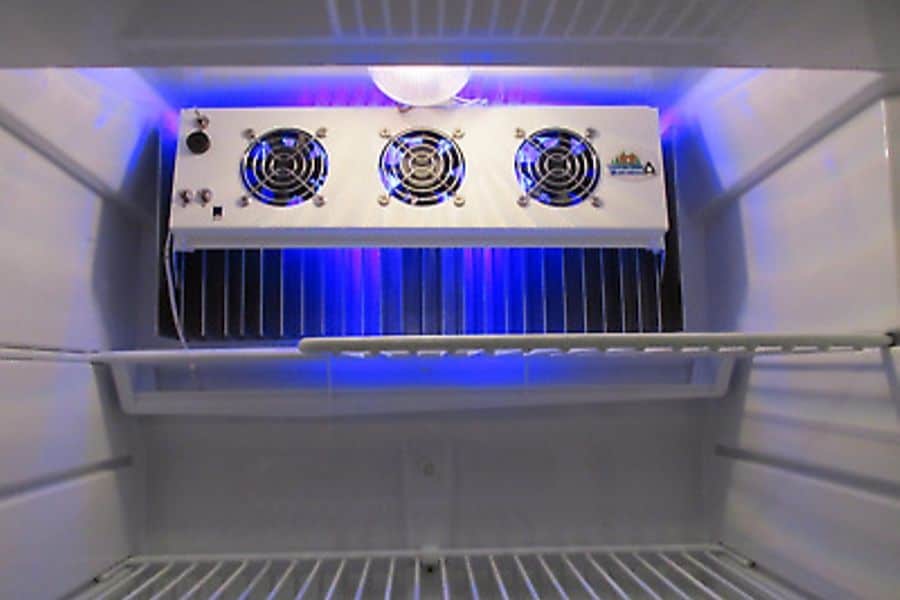
Add some cooling fans to the bottom section of the RV’s freezer will help with the thermal exchange.
The fans essentially help drive added cool air from the freezer through the refrigerator system, which ultimately reduces the cooling load on the system.
Depending on how your refrigerator and freezer are packed, you might be able to improve thermal efficiency by as much as 50%.
4: Turn Down The Temperature Setting When External Temperatures Are Low
The outside air temperature can affect an RV refrigerator more than a kitchen refrigerator.
If you are camping in the spring, fall, or winter, and the ambient air temperature in the camper is lower than average, you can turn down the refrigerator’s setting with little impact on internal temperature.
5: Run The RV’s Refrigerator Before Packing It
An absorption refrigerator takes time to cool all the way down. If you are about to head out on a trip, give it a good 4 to 6 hours to run before packing it with food and other cold items.
6: Pack Cold Foods In The Refrigerator First
Even once the RV refrigerator has been prechilled, it will still help to place the coldest items first when packing.
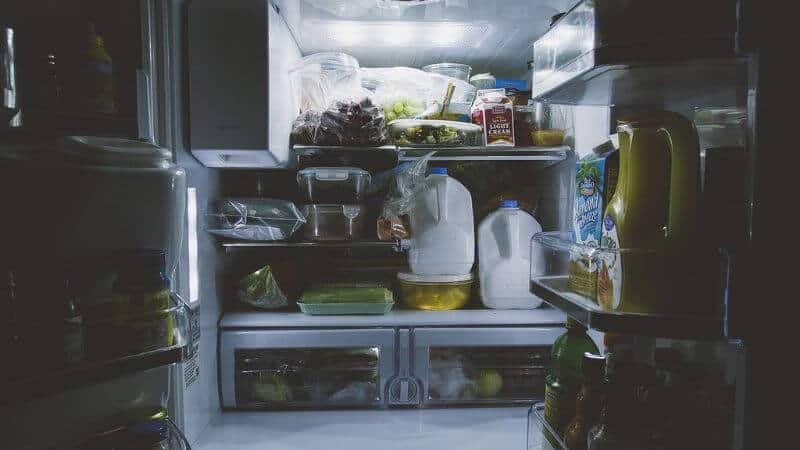
This will further reduce the thermal load on the system. If you have the room to spare you could also place cold packs on the shelves to help drive the temperature down further.
This is another time when you might want to put a small battery-operated fan in the freezer.
7: Make Sure The Rear Of The RV Refrigerator Isn’t Blocked
Most absorption refrigerators in RVs vent the heat energy out the back. The lower vent then also brings in cold air, while hot air leaves the fridge at the same time.
If anything is blocking or obstructing the airflow at the back of the refrigerator, it could significantly hamper the cooling process.
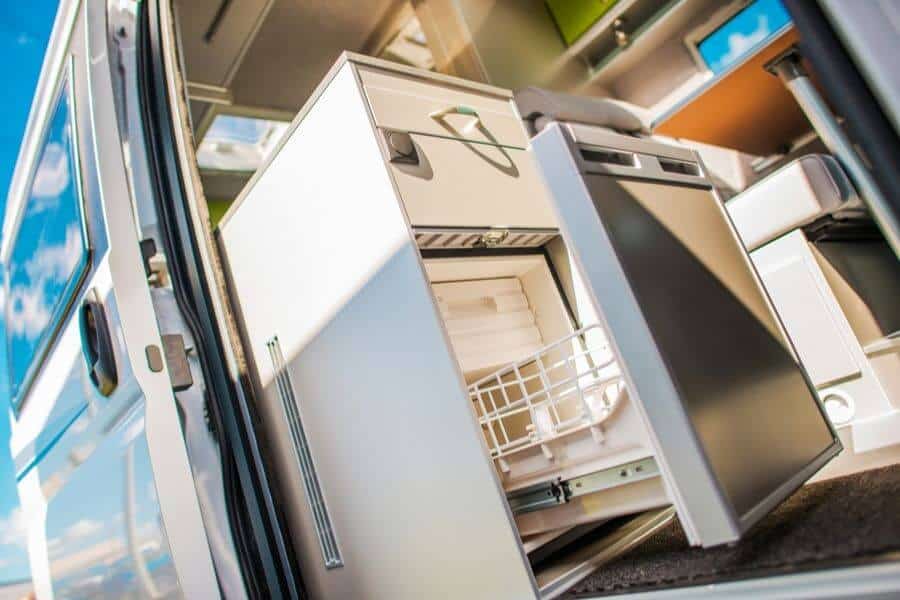
It’s entirely possible that something might have accidentally fallen behind the refrigerator in transit blocking up one or both of these important airflow dynamics.
At the same time, the wall behind the RV can be a factor. Some RV refrigerators have a minimum distance required at the back.
If you have installed a new refrigerator, the requirements might be different and there simply might not be enough airflow to fully accommodate the heat exchange process.
Tips For Using Coolers To Augment Your RV Refrigerator To Save Propane
If you are going to be camping off the grid with your RV for a significant amount of time, say a week or more, then chances are your refrigerator isn’t going to be big enough to hold all your perishable food items.
Even if you can wedge it all in there, chances are the airflow inside will impact overall airflow and efficiency.
Using a high-quality cooler or two to help augment your refrigerators cold storage can help you keep things cold, without taxing the system to the max.
This is a great way to make sure that everyone has a cold beverage, or that condiments are chilled yet easy to access.
At the same time, keeping basic daily use items in a cooler will reduce the number of times in a day where you need to open the refrigerator, letting old air out.
When setting up a cooler, it’s best to use ice blocks or large ice packs, as opposed to ice cubes. The reduced surface air and cold density of an ice block will help to slow the melting process.
It can potentially help the cooler to stay cold for days longer than a simple bag of ice cubes.
Even if all you can find on the road are bags of ice, don’t break them up, just gently place them on top of the food items and drinks.
Get An Electric Cooler
There are some 12V coolers on the market that work on electricity. You simply plug them into the onboard power and their own built-in cooling system augments the internal ice. This helps keep the cooler colder for longer.
This is a great option for storing food items that you plan to eat early on in an off the grid vacation, or if you want to enjoy a big first-night celebratory meal.
At that point, you can reorganize your cooler or quickly repack the refrigerator.
In Conclusion
An RV absorption refrigerator is a joyous innovation. Like any piece of technology, some basic maintenance and thoughtful use will go a long way toward maximizing its performance as well as it’s overall lifespan.
Make sure to give it time to cool down before loading, pack it thoughtfully, keep it level, and be mindful of airflow.
With these simple tips in hand, your RV refrigerator will use less propane, while keeping your perishable food items comfortably cool.

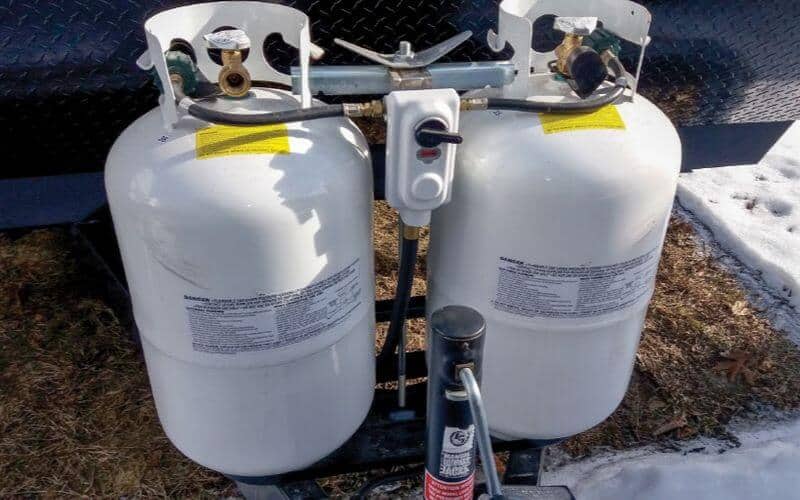
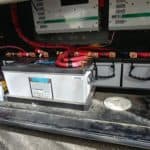

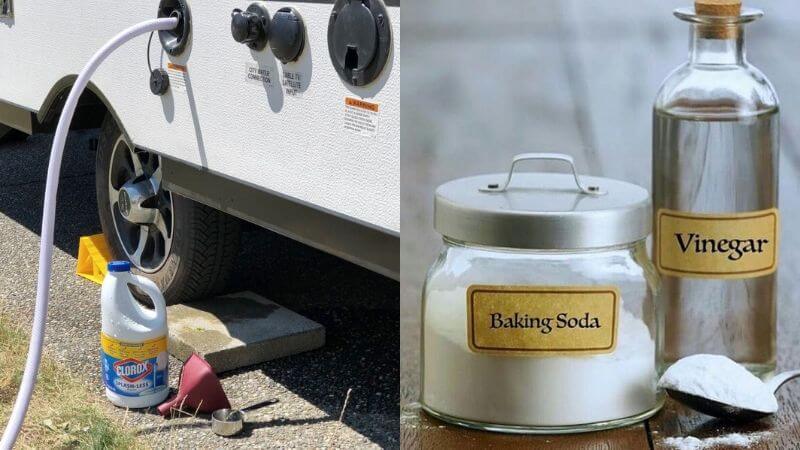
![The 6 Best Compact and Portable RV Dishwashers in [currentyear] 5 The Best RV Dishwasher](https://www.rvingknowhow.com/wp-content/uploads/2022/05/The-Best-RV-Dishwasher.jpg)
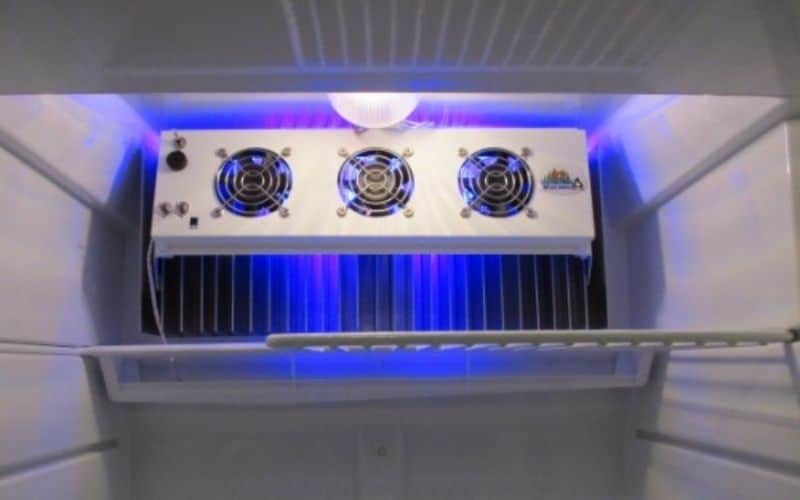
3 Comments
Natalie Roberts
4 years agoGreat information! But I have a question. Can I used ammonia as coolants? And How can I Check the Ammonia Level in RV Fridge? Hope you have some information for me. Thanks again!
Lonnie
3 years agoGreat article. Thanks for the info. We have been unknowingly doing the right things.
Aaron Richardson
3 years agoGlad you like 🙂